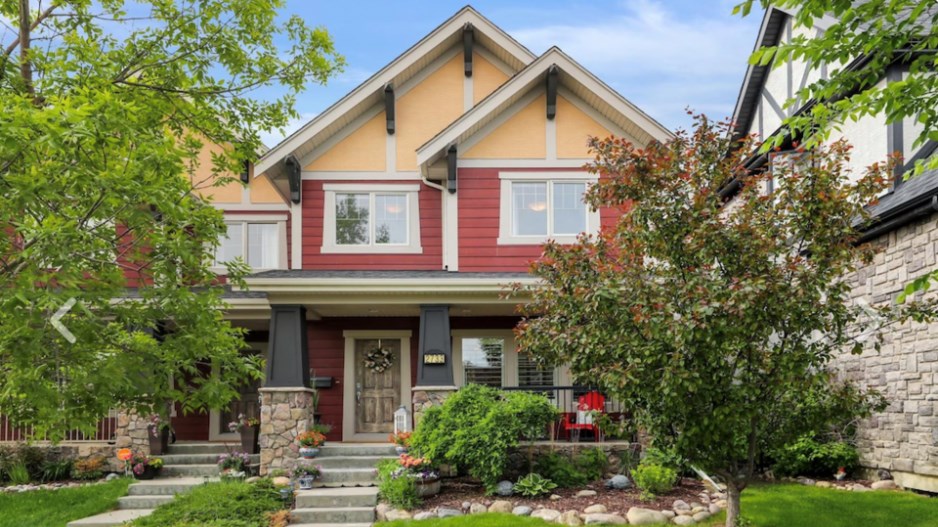Reasonable pricing has made Alberta the go-to destination for homebuyers from southern Ontario, where rapid price escalation has tested buyers’ patience.
“The pricing in Alberta is still pretty reasonable compared to Toronto,” said Brian Rushton, chief operating officer with Century 21 Canada, which released its latest survey of residential pricing this week. “We’ve seen a lot of investors coming in from the Greater Toronto market, especially.”
Conducted each year since 2018, the survey examines pricing per square foot for a range of housing types in major markets across the country during the first six months of each year.
This year’s report identified double-digit price increases across the 19 markets surveyed in Ontario with the exception of detached homes in Hamilton, Newmarket, Ottawa and Windsor, where prices increased by less than nine per cent. The increases meant that just one market – Owen Sound – reported average sale prices of less than $400 per square foot.
This contrasted with Alberta, where all markets surveyed reported prices below $400 a square foot. High River, where condo prices saw the strongest growth of 27 per cent versus last year, checked in at $223 per square foot. In Okotoks, detached home prices increased 19 per cent to $338 per square foot. In the Edmonton suburb of St. Albert, condos even logged a 5 per cent decline in pricing to $238 a square foot.
“Calgary is probably a shining star for someone moving out of the GTA or potentially out of Vancouver as well,” Rushton said. “When we compare that to some of the markets in B.C., it’s still pretty affordable.”
During the first six months of this year, the period Century 21’s report covers, the Calgary Real Estate Board reported a 24 per cent increase in residential sales versus last year.
While investment activity was strong, the activity was also driven by relocations as the Alberta economy picked up and people left higher-priced Ontario markets because they could.
“[It’s] not just investors, but people relocating as well, and I think the relocations are the result of the work-at-home programs,” Rushton said. “Some of those people were with companies that allowed them to do it on a permanent basis as opposed to just a COVID basis.”
He points to Century 21 Bamber Realty Ltd. In Calgary, which reported that of 15 deals one of its agents did, 10 were with owner-occupiers from the GTA.
Smaller, regional markets have also seen strong appreciation in pricing, thanks in part to an influx from larger centres within the province. Buyers from Vancouver or Toronto seeking a cheaper city with good job prospects might opt for Calgary, but Calgary residents looking to move out of the city are choosing centres like Okotoks and Red Deer.
“[It’s] strictly to do with people cashing out and getting into something more reasonable in those markets,” Rushton said. “Places like Red Deer, it’s been pretty consistent. You can still get a really nice home there for a reasonable dollar.”
Prices in Red Deer for all property types increased less than 5 per cent versus last year. Detached home prices, which Century 21 has tracked the longest, are $293 per square foot – just $17 more than in 2018.
In High River and Okotoks, detached home prices have posted strong gains over the past five years, but the recent gains by condos have merely clawed back value lost during the pandemic. In the case of those fast-growing High River condo prices, at $223 per square foot they’re still $18 below the $241 per square foot reported in 2019.
Other markets on the Prairies have seen similar trends. Many saw average pricing dip during the pandemic, only to recover this year.
Within Manitoba, the strongest growth in value was seen for condos in Brandon, which increased 20 per cent to $243 a square foot. Some of this may have been owing to the large number of new units coming to market. According to Canada Mortgage and Housing Corp. data, 30 per cent of units completed this year to date and 40 per cent of units under construction are apartments.
In Saskatchewan, the strongest growth in pricing was for detached homes, which increased 14 per cent to $284 a square foot after three years below 2018 pricing. Meanwhile, condo prices continued to slide, and now stand 17 per cent below 2018 at $194 per square foot.
“The graduation out of condo into detached homes has probably taken place,” Rushton said. “Condos have never really taken off the way they have in other major markets; everyone wants their plot of land.”
But pricing in all markets is likely to tighten up in the second half of this year, with the exception of Alberta.
“We don’t see the tightening up in Alberta, just because the affordability factor is so strong,” Rushton said.
According to RBC Economics, Alberta will see the strongest growth in house prices this year of the three Prairie provinces while leading Western Canada in sales growth. For 2023, RBC forecasts Alberta to report the smallest decline in pricing of any market in Western Canada even as sales drop 27 per cent, faster than anywhere else in Canada except Newfoundland.




